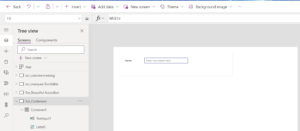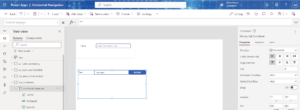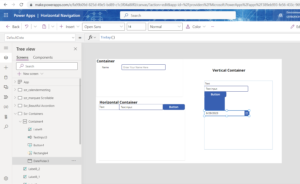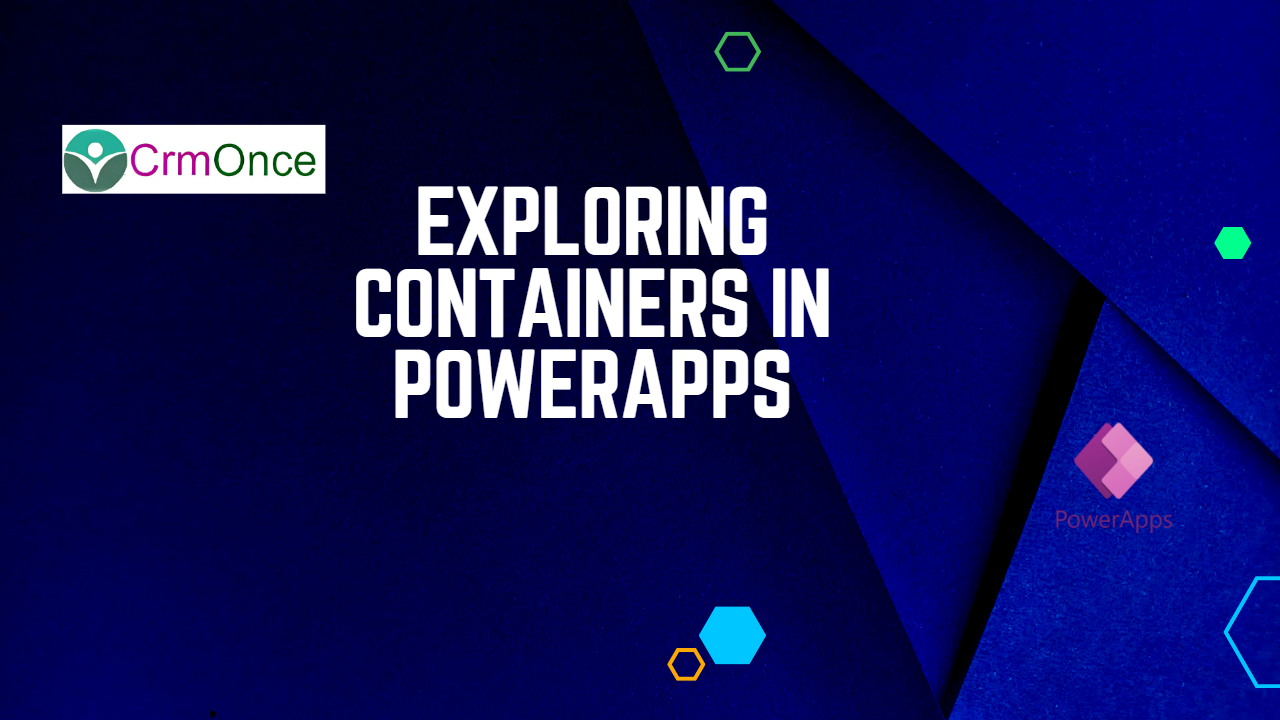Power Apps:
In PowerApps, containers are controls that help you organize and arrange other controls on a screen.
Login->make.powerapps.com
Containers in PowerApps
There are three main types of containers: Containers, Horizontal containers, and Vertical containers. Each container has its own benefits and use cases. Let’s explore each of them:

Container:
General containers are flexible containers that allow you to group controls together.
They can be resized and positioned anywhere on the screen.
You can use them to create custom layouts and group related controls together.
General containers don’t have any specific orientation and can hold controls in any arrangement.
They provide more flexibility in terms of control placement and styling.
For Example I have added only TextLabel and Textinput in the Container

Horizontal Container:
Horizontal containers organize controls in a horizontal (left-to-right) orientation.
Controls placed inside a horizontal container flow horizontally, wrapping to the next line when necessary.
Horizontal containers are useful when you want to create a horizontal layout, such as a navigation menu or a row of buttons.
They automatically adjust the width of controls based on the available space, ensuring proper alignment.

Vertical Container:
Vertical containers organize controls in a vertical (top-to-bottom) orientation.
Controls placed inside a vertical container flow vertically, stacking on top of each other.
Vertical containers are suitable for creating vertical layouts, such as forms or lists.
They automatically adjust the height of controls based on the content, ensuring proper alignment and scrolling if needed.

Benefits of using containers in PowerApps
Structure and organization: Containers help you logically group related controls together, making your app more organized and easier to navigate.
Layout flexibility: Containers allow you to create custom layouts and arrange controls precisely according to your design requirements.
Responsive design: Containers automatically adjust the size and positioning of controls, ensuring they adapt to different screen sizes and orientations.
Maintainability: By using containers, you can easily make changes to the layout or styling of a group of controls without affecting other parts of the app.
Reusability: Containers can be copied and reused in different screens or parts of your app, saving you time and effort in designing consistent user interfaces.
Containers in PowerApps provide a structured and flexible approach to control placement, making it easier to create well-organized and visually appealing apps.
https://www.crmonce.com/pass-generate-while-approve-the-request-in-bank/
For any Help or Queries Contact us on info@crmonce.com or +918096556344

